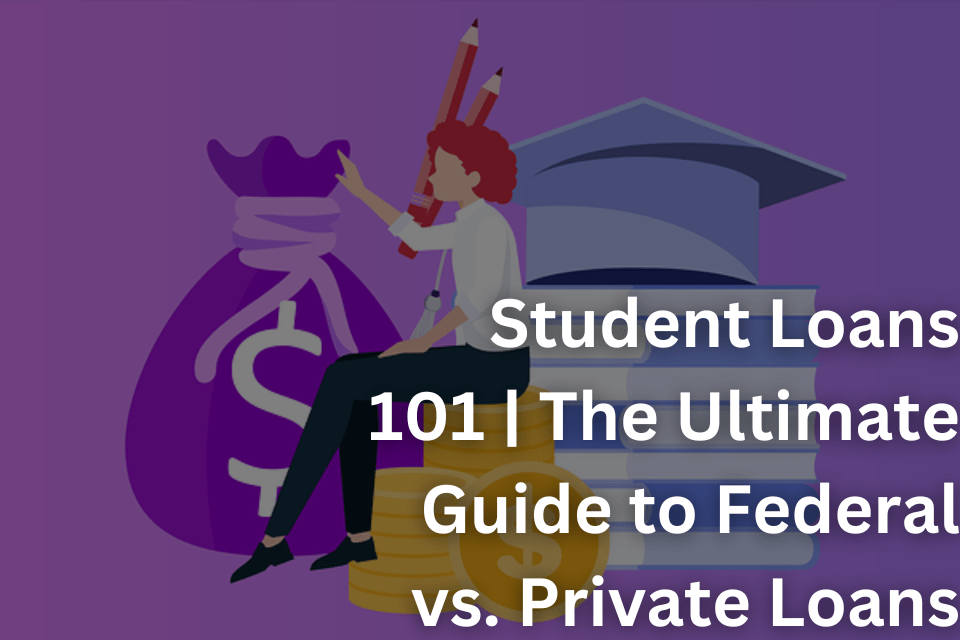When it comes to paying for college, student loans are often a necessary part of the equation. But with so many options available, it can be overwhelming to determine which type of loan is right for you. In this guide, we’ll take a closer look at the two main types of student loans: federal and private.
Federal Student Loans
Federal student loans are provided by the government and have a fixed interest rate. They are available to all students regardless of credit history and come with several benefits, such as income-driven repayment plans and loan forgiveness programs. Additionally, interest on federal student loans is tax-deductible, which can help to lower the overall cost of the loan.
There are several types of federal student loans, including:
- Direct Subsidized Loans: Available to undergraduate students with financial need
- Direct Unsubsidized Loans: Available to undergraduate, graduate, and professional students regardless of financial need
- Direct PLUS Loans: Available to graduate and professional students, as well as parents of dependent undergraduate students
- Federal Perkins Loans: Available to undergraduate and graduate students with exceptional financial need
Private Student Loans
Private student loans are provided by banks and other private lenders, and they typically have a variable interest rate. They are based on the borrower’s credit history and income, and may have stricter underwriting requirements than federal loans. However, private student loans can sometimes have lower interest rates than federal student loans, especially if the borrower has a good credit score.
Interest Rates
Interest rates are an important factor to consider when choosing between federal and private student loans. The interest rate on federal student loans is fixed, meaning it will not change over the life of the loan. Private student loans, on the other hand, typically have a variable interest rate, which can fluctuate based on market conditions.
Repayment Options
Repayment options are another important factor to consider when choosing between federal and private student loans. Federal student loans offer several repayment plans, including income-driven repayment plans, which can help to lower the monthly payment for borrowers who are struggling to make payments. Additionally, some federal student loans are eligible for loan forgiveness programs, which can help to lower the overall cost of the loan.
Private student loans typically do not offer as many repayment options as federal student loans, and they are not eligible for loan forgiveness programs. However, some private student loan lenders may offer refinancing options, which can help to lower the interest rate or monthly payment.
Credit History
Credit history is another important factor to consider when choosing between federal and private student loans. Federal student loans are available to all students regardless of credit history, whereas private student loans are based on the borrower’s credit history and income.
If you have a good credit history, you may be able to qualify for a lower interest rate on a private student loan. However, if your credit history is poor, you may be required to pay a higher interest rate or be denied the loan altogether.
Conclusion
When it comes to paying for college, student loans are often a necessary part of the equation. Federal student loans and private student loans are the two main types of student loans available. Each has its own set of pros and cons, and the best option for you will depend on your individual circumstances. It’s important to carefully consider the factors discussed in this guide, such as interest rates, repayment options, and credit history, when making your decision.
It’s also important to note that federal student loans should be the first choice when it comes to funding your education, as they offer more benefits and protections than private student loans. However, if you’ve exhausted your federal student loan options and still need additional funding, private student loans can be a viable option.
It’s recommended to exhaust all federal options before considering a private student loan. Be sure to do your research and compare multiple lenders to find the best rate and terms. Make sure you understand the terms and conditions of the loan, including the interest rate and repayment options, before you agree to anything.
In conclusion, while both federal and private student loans can help to finance your education, they have different terms and conditions. It’s crucial to understand the difference between the two and carefully evaluate your options before making a decision. Federal student loans should be your first choice, but if you’ve exhausted all options, private student loans can be a viable alternative.

